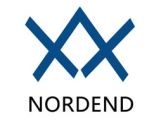CS-Lab Support Forum for CNC Community
Help to run this brand-new forum and stay with us.
Ask your questions, we are here to help!
PID tuning question (parameters, regulators - the example of CSMIO/IP-A and servo drives)
Quote from CS-Lab Support on 4 May 2023, 11:59The question:
I use the CSMIO/IP-A with MACH3 [...] to control a waterjet cutting system. Between the CSMIO/IP-A and the servo motors [...] there is a servo amplifier [...]. The servo amplifier serves as a speed controller, the CSMIO/IP-A as a position controller. In "General Config" in MACH3 i selected the motion mode "Constant Velocity" (i also tried the mode "Exact Stop" but nothing changed). The axes are driven with toothed belts, the gear between the motor and toothed belt has a gear reduction of 4:1. The data sheet for the SEC-AC 305 states that the incremental encoder output delivers 1024 Increments/revolution. Now I have the following problems:
1) when driving, the axes vibrate. I first set the parameters for the speed control directly on the servo amplifier; these look fine. Then I set the KP gain in the CSMIO/IP-A (PID-tuning). At a value of KP = 5000 for the X axis and a value of KP = 14000 for the Y axis, the axles start to vibrate. The auto-tuning (PID-tuning) set a value of 125000 for the X axis once - at this value the axis does not vibrate. However, with each additional auto-tuning, a KP value of approximately 22000-55000 for X axis is set and the axis starts vibrating immediately. With small KP values (~3000 for X and Y) the axes do not vibrate, but the accuracy is very poor.
2) The system runs imprecisely. Using the automatic calculation of the steps per millimeter in MACH3 ("Settings - Set Steps per Unit"), I typed in and measured a travel distance of 50mm and 150mm. The actual travel distances were 49.9mm and 149.6mm. So the number of steps per millimeter was different in both cases. It appears that the error increases as the travel distance increases. In the PID tuning of the CSMIO/IP-A, the "current error" is completely corrected with the K_P value of 125000 and the maximum error that occurs is approximately 5 (for the X axis). With a KP value of 91000 for the Y axis, the current error is also completely corrected and the maximum error that occurs is approximately 18. But the speed at which the Y axis moves may not exceed 600mm/min (acceleration set to 120mm/sec² ), otherwise it will vibrate.The answer:
- Based on your description, I guess that the issue is too soft or an incorrectly tuned velocity PID regulator.
>>> I first set the parameters for the speed control directly on the servo amplifier, these look fine.
On what basis do you claim that? Have you checked the magnitude of the speed error expressed in RPM?
You need to know that the position PID regulator in CSMIO/IP-A cannot fix (compensate) the problem of too soft or incorrectly tuned velocity PID regulator.
The control system is as precise as its weakest link. If the velocity PID loop is not tuned precisely, the whole system will suffer.Too softly tuned velocity PID regulator.
I mean a situation in which the value of the KP and KI parameters of the velocity regulator are too low.
This leads to the too low sensitivity of a drive, i.e., too weak response to the set speed via the +/-10V signal.
Trying to fix this problem by increasing the KP, KI values of the PID regulator of the position can only lead to oscillation or jerking of a servo motor.
A sign of too soft tuning of the velocity PID regulator may be high KP and KVff values during autotuning of the CSMIO/IP-A controller.
Unfortunately, you do not mention anything about the other parameters except KP.Incorrectly tuned velocity PID regulator.
I mean a situation in which the proportion between the values of the KP and KI parameters of the velocity regulator is not corresponding.
If the value of the KI parameter is too high in relation to the value of the KP parameter, low-frequency oscillations may occur (visible swinging - axis floating).
If the value of the KP parameter is too high in relation to the value of the KI parameter, high-frequency oscillations (squeaks and tremors) may occur.
2. This is a trifle and is absolutely not related to the PID regulator.
>>> Using the automatic calculation of the steps per millimeter in MACH3
Using automatic step calculation in my opinion is not the best idea.
I always calculate the number of steps to have a broader view of the situation.
According to your description, the position error more or less increases linearly, so a small correction of the number of pulses per millimeter should solve the problem.
A few additional notes:
>>> In "General Config" in MACH3 i selected the motion mode "Constant Velocity" (i also tried the mode "Exact Stop" but nothing change).
This topic is completely unrelated to the main problem in point number 1.
I will only add that in the case of Mach3, you should enable two options and configure one parameter.
- Option to enable constant speed function.
- Option enabling the ability to control the size of corner roundings.
- Parameter determining the value of rounding corners.
The lower the value of this parameter, the more accurate the cutting of corners, but slower.
>>> The axles are driven with toothed belts, the gear between the motor and toothed belt has a gear reduction of 4:1.
What speed does your servo drive achieve at this ratio?
You need to know that too low gear ratio can cause the servo motor to work at too low rotational speeds.
As a result, the servo drive will not develop its full power and will behave like a car driving in 6th gear through a city.
In this situation, the accelerations obtained may be very low, the tuning of the PID regulators may be difficult, and the operation of the axes may be restless or even jerky.
>>> The data sheet for the SEC-AC 305 states that the incremental encoder output delivers 1024 Increments/revolution.
This is a low value and may, to some extent, impair the precision of movement.
The recommended value for Mach3 is 10000 pulses per rotation of a servo motor shaft.
The question:
I use the CSMIO/IP-A with MACH3 [...] to control a waterjet cutting system. Between the CSMIO/IP-A and the servo motors [...] there is a servo amplifier [...]. The servo amplifier serves as a speed controller, the CSMIO/IP-A as a position controller. In "General Config" in MACH3 i selected the motion mode "Constant Velocity" (i also tried the mode "Exact Stop" but nothing changed). The axes are driven with toothed belts, the gear between the motor and toothed belt has a gear reduction of 4:1. The data sheet for the SEC-AC 305 states that the incremental encoder output delivers 1024 Increments/revolution. Now I have the following problems:
1) when driving, the axes vibrate. I first set the parameters for the speed control directly on the servo amplifier; these look fine. Then I set the KP gain in the CSMIO/IP-A (PID-tuning). At a value of KP = 5000 for the X axis and a value of KP = 14000 for the Y axis, the axles start to vibrate. The auto-tuning (PID-tuning) set a value of 125000 for the X axis once - at this value the axis does not vibrate. However, with each additional auto-tuning, a KP value of approximately 22000-55000 for X axis is set and the axis starts vibrating immediately. With small KP values (~3000 for X and Y) the axes do not vibrate, but the accuracy is very poor.
2) The system runs imprecisely. Using the automatic calculation of the steps per millimeter in MACH3 ("Settings - Set Steps per Unit"), I typed in and measured a travel distance of 50mm and 150mm. The actual travel distances were 49.9mm and 149.6mm. So the number of steps per millimeter was different in both cases. It appears that the error increases as the travel distance increases. In the PID tuning of the CSMIO/IP-A, the "current error" is completely corrected with the K_P value of 125000 and the maximum error that occurs is approximately 5 (for the X axis). With a KP value of 91000 for the Y axis, the current error is also completely corrected and the maximum error that occurs is approximately 18. But the speed at which the Y axis moves may not exceed 600mm/min (acceleration set to 120mm/sec² ), otherwise it will vibrate.
The answer:
- Based on your description, I guess that the issue is too soft or an incorrectly tuned velocity PID regulator.
>>> I first set the parameters for the speed control directly on the servo amplifier, these look fine.
On what basis do you claim that? Have you checked the magnitude of the speed error expressed in RPM?
You need to know that the position PID regulator in CSMIO/IP-A cannot fix (compensate) the problem of too soft or incorrectly tuned velocity PID regulator.
The control system is as precise as its weakest link. If the velocity PID loop is not tuned precisely, the whole system will suffer.
Too softly tuned velocity PID regulator.
I mean a situation in which the value of the KP and KI parameters of the velocity regulator are too low.
This leads to the too low sensitivity of a drive, i.e., too weak response to the set speed via the +/-10V signal.
Trying to fix this problem by increasing the KP, KI values of the PID regulator of the position can only lead to oscillation or jerking of a servo motor.
A sign of too soft tuning of the velocity PID regulator may be high KP and KVff values during autotuning of the CSMIO/IP-A controller.
Unfortunately, you do not mention anything about the other parameters except KP.
Incorrectly tuned velocity PID regulator.
I mean a situation in which the proportion between the values of the KP and KI parameters of the velocity regulator is not corresponding.
If the value of the KI parameter is too high in relation to the value of the KP parameter, low-frequency oscillations may occur (visible swinging - axis floating).
If the value of the KP parameter is too high in relation to the value of the KI parameter, high-frequency oscillations (squeaks and tremors) may occur.
2. This is a trifle and is absolutely not related to the PID regulator.
>>> Using the automatic calculation of the steps per millimeter in MACH3
Using automatic step calculation in my opinion is not the best idea.
I always calculate the number of steps to have a broader view of the situation.
According to your description, the position error more or less increases linearly, so a small correction of the number of pulses per millimeter should solve the problem.
A few additional notes:
>>> In "General Config" in MACH3 i selected the motion mode "Constant Velocity" (i also tried the mode "Exact Stop" but nothing change).
This topic is completely unrelated to the main problem in point number 1.
I will only add that in the case of Mach3, you should enable two options and configure one parameter.

- Option to enable constant speed function.
- Option enabling the ability to control the size of corner roundings.
- Parameter determining the value of rounding corners.
The lower the value of this parameter, the more accurate the cutting of corners, but slower.
>>> The axles are driven with toothed belts, the gear between the motor and toothed belt has a gear reduction of 4:1.
What speed does your servo drive achieve at this ratio?
You need to know that too low gear ratio can cause the servo motor to work at too low rotational speeds.
As a result, the servo drive will not develop its full power and will behave like a car driving in 6th gear through a city.
In this situation, the accelerations obtained may be very low, the tuning of the PID regulators may be difficult, and the operation of the axes may be restless or even jerky.
>>> The data sheet for the SEC-AC 305 states that the incremental encoder output delivers 1024 Increments/revolution.
This is a low value and may, to some extent, impair the precision of movement.
The recommended value for Mach3 is 10000 pulses per rotation of a servo motor shaft.






















